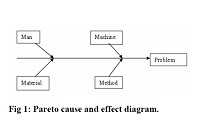Application of quality control principles to herbal drugs
Keywords:
WHO, Herbal Drugs, Quality ControlAbstract
Quality is conformance to requirement and meeting stated as well as implied needs of customer. The word quality is derived from Latin ‘qualis’ means ‘of what kind’ and encompasses composition and properties of object. Quality is of paramount importance when it is specifically related with drugs. And when it comes to herbal drugs, because of several reasons is a herculean task. The quality of pharmaceuticals has been a concern of the World Health Organization (WHO) since its inception. The setting of global standards is requested in Article 2 of the WHO Constitution, which cites as one of the Organization’s functions that it should “develop, establish and promote international standards with respect to food, biological, pharmaceutical and similar products”. The World Health Assembly - in resolutions WHA31.33 (1978), WHA40.33 (1987) and WHA42.43 (1989) - has emphasized the need to ensure the quality of medicinal plant products by using modern control techniques and applying suitable standards. This manual describes a series of tests for assessing the quality of medicinal plant materials. The tests are designed primarily for use in national drug quality control laboratories in developing countries, and complement those described in ‘The international pharmacopoeia’ which provides quality specifications only for the few plant materials that are included in the WHO ‘Model List of Essential Drugs'. In this review, we have addressed some important issues related to quality of botanicals and discussed possible application of total quality management for herbal drugs.
References
Levi L, Walker GC, Pugsley I. Quality control of pharmaceuticals. Can Med Assoc J 1964; 91:781-785.
WHO general guidelines for methodologies on research and evaluation of traditional medicine. 2000 ; available at: http://whqlibdoc.who.int/hq/2000/WHO_EDM_ TRM_2000.1.pdf.
Verpoorte R, Mukherjee PK. GMP for botanicals: regulatory and quality issues on phytomedicines.1st ed. Business Horizons; 2003. p.60.
WHO policy perspective on medicinestraditional medicines growing needs and potential no 2 May 2002.1-6
Bhutani KK. Herbal medicines-an enigma and challenge to science and directions for new initiatives. Indian J Nat Prod 2003; 19(1): 3-10.
Thatte U. Challenges in clinical research on herbs. Indian J Nat Prod 2003; 19(1):35-36. 7. Blumenthal M. Herbal Monographs initiated by numerous groups. Herbal Gram 1997; 40: 30- 38.
Shinde V: Exploration of molecular markers in quality control of herbal medicines. Master thesis. Bharati Vidyapeeth University, Deparment of Pharmacognosy;2004.
Raina MK. Quality control of herbal and herbomineral formulations. Indian J Nat Prod 2003; 19(1): 11-15. 10. Shinde V, Dhalwal K. Pharmacognosy: the changing scenario. Pharmacognosy Reviews 2007; 1(1):1-6.
Donald MM, Arthur PG. Botanical medicines the need for new regulations. N Engl J Med 2002; 347 (25):2073-76.
Anna KD, Stephen PM. Safety issues in herbal medicine: implications for the health professions. Med J Aust 1997;166: 538-541.
Michael DR. Herbal medicine: a practical guide to safety and quality assurance. West J Med 1999; 171:172-175.
Joanne B. Quality, efficacy and safety of complementary medicines: fashions, facts and the future. Part 1 Regulation and quality. Br J Clin Pharmacol 2003;55: 226-233.
Mukherjee PK. Quality control of herbal drugs: An approach to evaluation of botanicals. 1st ed. Business horizons; India: 2002. p. 113-9.
Robert BS, Stefanos NK, Janet P, Michael JB, David ME, Roger BD, Russell SP. Heavy metal content of Ayurvedic herbal medicine products. J Am Med Assoc 2004; 292(23): 2868 -2873.
Peter AGM, De Smet. Herbal remedies. N Engl J Med 2002; 347(25): 2046-56.
Patwardhan B. Ayurveda: the designer medicine: a review of ethnopharmacology and bioprospective research. Indian Drugs 2000; 37(5):213-227.
Shinde V, Dhalwal K, Mahadik KR. Issues related to pharmacognosy. Pharmacognosy Reviews 2008; 2(3):1-5.
Anonymous. Enclclopaedia of total quality management. Fundamentals of quality management Vol 1, Quality Institute of India, New Delhi, 2008. p. 27-85.
Juran JM, Godfrey AB. Juran’s quality handbook.5th ed. Mc Graw- Hill New York, US; 1999.



